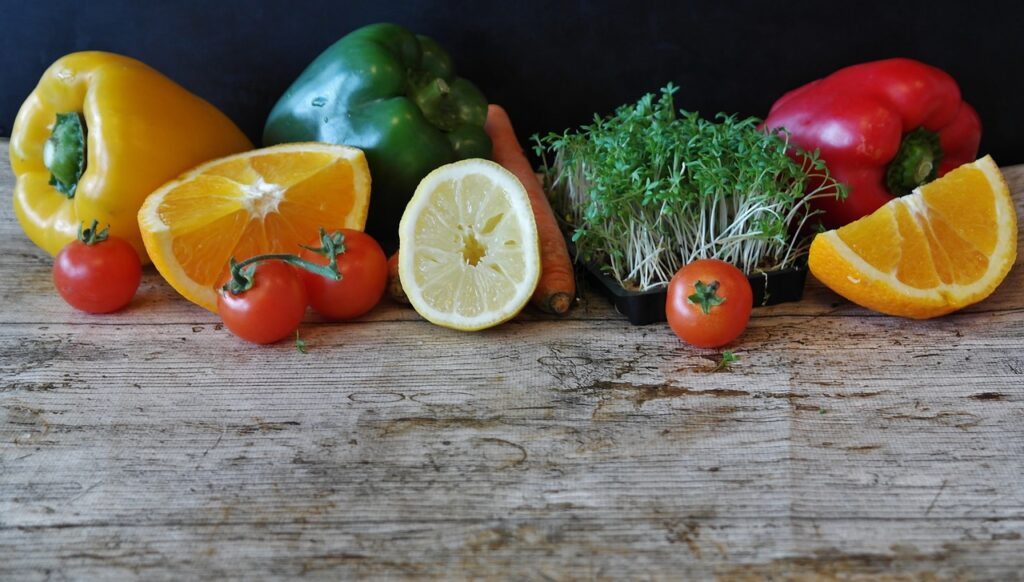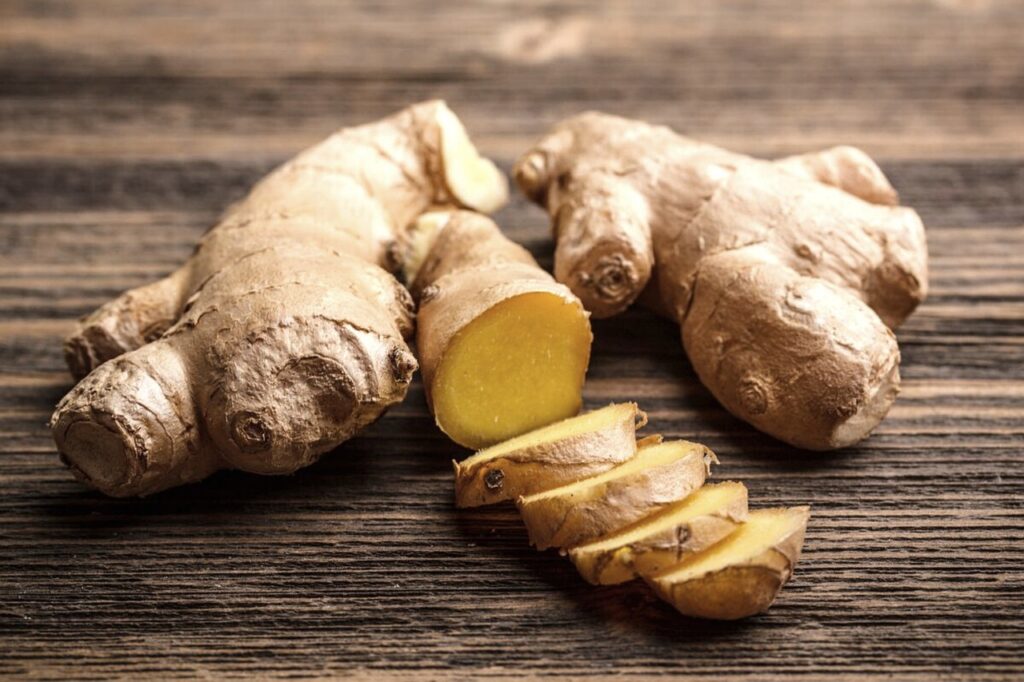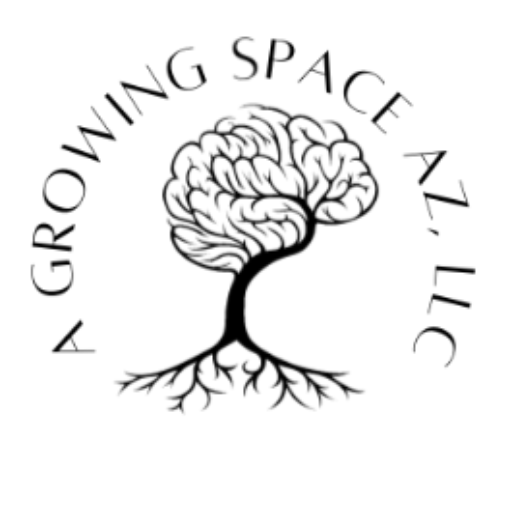In the hectic pace of our daily routines, it’s easy to underestimate the profound impact that what we eat can have on our well-being.
But what if we told you that the food on your plate holds the key to not just fueling your body but also unlocking a journey of healing, particularly from the shadows of trauma?
Drawing from my experiences as a “trauma mama,” domestic violence survivor, and a seasoned Trauma Specialist, I’ve witnessed firsthand the transformative power of nutrition in the process of recovery. Not only that, but I’ve spent over two decades working with diverse individuals, and my own life experiences have taught me valuable lessons that go beyond the pages of textbooks.
In this short post, I aim to share some of these lessons with you, as well as uncover the simple yet powerful ways in which what you eat can become a cornerstone for rebuilding, recharging, and rediscovering a path towards optimal health and wellness. Ready?
But First, What Is Trauma?
Trauma is a word we often hear, but its true meaning and implications can sometimes be shrouded in mystery. At its core, trauma refers to an emotional or psychological response to an event or series of events that overwhelms an individual’s ability to cope or integrate the emotions involved with that experience. It can stem from various sources, ranging from natural disasters and accidents to abuse, violence, or significant loss.
Understanding trauma goes beyond mere definition; it delves into the profound impact these experiences can have on our mental, emotional, and physical well-being. It’s not just about the event itself but also about how it affects our sense of safety, trust, and ability to navigate the world around us.

Trauma isn’t always evident on the surface. It can linger beneath the layers of our consciousness, manifesting in subtle ways that influence our thoughts, behaviors, and relationships. It’s important to recognize that trauma is not a one-size-fits-all experience. What may be traumatic for one person may not have the same effect on another.
Acknowledging trauma is the first step towards healing. It’s about creating a safe space to explore and understand the impact of past experiences on our present lives. It’s about validating our emotions and reclaiming our sense of agency in the face of adversity.
Trauma is an emotional or psychological response to an event or series of events that overwhelms an individual’s ability to cope or integrate the emotions involved with that experience.
– Dr. Peca
What Is Nutritional Healing?
Now that we understand what trauma is, let us define nutritional healing and then move on to explain how nutrition can help you heal from trauma.
Nutritional healing is a powerful and ancient practice that views food not just as sustenance but as a potent tool for promoting healing and preventing disease. At its core, this approach recognizes the profound impact that our dietary choices can have on our physical, mental, and emotional well-being.

The essence of nutritional healing lies in the idea that the foods we consume play a crucial role in supporting our body’s natural healing processes. This concept is not a modern revelation; it has roots in centuries-old traditional medicine systems like Ayurveda and Traditional Chinese Medicine, where the therapeutic properties of food have long been acknowledged.
In recent years, the resurgence of interest in holistic health and the alarming rise of chronic diseases have brought nutritional healing into the spotlight. More than just a trend, it represents a return to the understanding that our bodies are intricate ecosystems, and what we feed them directly influences their ability to thrive.
Through nutritional healing, individuals can harness the inherent power of foods to address health concerns, boost immunity, and cultivate overall well-being. It’s a proactive and personalized approach that recognizes the uniqueness of each person’s body and tailors dietary choices to support their specific needs.
5 Strategies for Nutritional Healing Success
Now that we’ve laid the groundwork for understanding nutritional healing, let’s explore the 5 strategies of nutritional healing, so we can understand the connection between food and healing from trauma. Hopefully, this will help us unlock and understand the full potential of healing through mindful and intentional eating.
1. Embrace the Power of Whole, Nutrient-Dense Foods:
In one of my recent interviews, I emphasized that at the heart of healing lies the cornerstone of a diet abundant in whole, nutrient-dense foods. This category encompasses a vibrant array of fruits, vegetables, whole grains, legumes, nuts, and seeds—foods that pack a punch of essential nutrients without the baggage of harmful additives and preservatives.

As you chart your meals, envision a plate bursting with a rainbow of colors, indicating a diverse range of vitamins, minerals, and antioxidants. Fruits and vegetables, with their rich nutritional profiles, play a crucial role in promoting healing and preventing disease. Complement these with whole grains, legumes, and the inclusion of healthy fats such as avocado and olive oil to craft a well-rounded, nutrient-dense diet that forms the bedrock of your nutritional healing journey.
But you might ask yourself what the connection is between these whole foods and healing from trauma? That is such a good question.
You see, in the realm of trauma recovery, the connection between a vibrant assortment of fruits, vegetables, whole grains, legumes, nuts, and seeds and the healing process is not just anecdotal; it’s deeply rooted in scientific understanding. Let’s uncover the scientific link between these foods and their profound impact on trauma recovery.
A. Nutrient Density and Brain Function:
The brain, a central player in trauma recovery, relies on a steady supply of nutrients for optimal function. Fruits and vegetables, especially those rich in antioxidants like vitamins A, C, and E, contribute to neuroprotection by combating oxidative stress—a common outcome of trauma. These antioxidants help shield the brain from damage and support cognitive function, essential for navigating the recovery journey.
B. Omega-3 Fatty Acids and Emotional Well-Being:
Nuts, seeds, and fatty fish are abundant sources of omega-3 fatty acids, crucial for emotional well-being. Research suggests that omega-3s play a role in reducing symptoms of depression and anxiety, common companions on the road to recovery from trauma. These healthy fats contribute to the structural integrity of brain cell membranes, fostering optimal communication between nerve cells and promoting emotional resilience.
C. Gut-Brain Axis and Emotional Regulation:
The gut-brain axis, a bidirectional communication system between the gut and the brain, plays a pivotal role in emotional regulation. Whole grains and legumes, rich in fiber, nurture a diverse and healthy gut microbiome. Emerging studies highlight the impact of gut health on mental well-being, suggesting that a balanced and flourishing gut microbiota can positively influence mood and stress resilience.
D. Protein for Neurotransmitter Production:
Proteins derived from legumes, nuts, seeds, and lean meats are building blocks for neurotransmitters, the chemical messengers facilitating communication in the brain. Amino acids from these protein sources contribute to the synthesis of neurotransmitters like serotonin and dopamine, which play key roles in mood regulation. Adequate protein intake is, therefore, crucial for supporting emotional balance during trauma recovery.
E. Complex Carbohydrates and Stable Blood Sugar:
Whole grains, such as quinoa and brown rice, provide complex carbohydrates that contribute to stable blood sugar levels. Fluctuations in blood sugar can impact mood and energy levels, potentially intensifying the emotional toll of trauma. Stable blood sugar levels, facilitated by these complex carbohydrates, support a more even emotional terrain, aiding in the management of stress and anxiety.
In essence, the scientific link between a nutrient-rich diet and trauma recovery lies in the intricate interplay of these foods with brain function, emotional regulation, neurotransmitter synthesis, and gut health. By embracing a diverse and colorful array of these foods, individuals can create a foundation that not only nourishes the body but also supports the mind on the journey toward healing from trauma. Stay tuned for more insights as we continue to explore the fascinating intersection of nutrition and well-being.
2. Don`t Ignore Those Herbs and Herbal Supplements
In addition to whole foods, herbal supplements can also play a role in trauma recovery. Turmeric, ginger, garlic, and green tea, can all play a pivotal role in promoting recovery.

These have been shown to have calming and stress-reducing effects. Let`s uncover more on this:
Turmeric:
Turmeric, a vibrant spice renowned for its golden hue, harbors a potent compound called curcumin. Curcumin boasts powerful anti-inflammatory and antioxidant properties, making it a formidable contender in the fight against inflammation—a common physiological response to trauma. By mitigating inflammation, turmeric contributes to a conducive internal environment for healing to unfold.
Ginger:
I love ginger! The humble ginger root, with its zesty flavor and warming qualities, harbors a treasure trove of health benefits. Rich in gingerol, a bioactive compound with potent anti-inflammatory and analgesic properties, ginger holds promise in alleviating symptoms of physical discomfort often associated with trauma recovery. Its soothing properties extend beyond the physical realm, offering a calming influence on the mind and spirit.
Garlic:
Garlic, celebrated for its pungent aroma and culinary versatility, harbors an arsenal of health-promoting compounds. Allicin, a sulfur-containing compound found in garlic, exhibits potent antioxidant and immune-boosting properties, bolstering the body’s defense mechanisms during the recovery process. Additionally, garlic’s anti-inflammatory properties may help temper the inflammatory response triggered by trauma, facilitating a smoother path to healing.
Green Tea:
Green tea, revered for its delicate flavor and myriad health benefits, offers a refreshing elixir for body and soul. Laden with catechins, potent antioxidants with anti-inflammatory and neuroprotective properties, green tea holds promise in supporting cognitive function and mental well-being—a vital aspect of trauma recovery. Its gentle caffeine content provides a subtle energy boost without the jarring effects of caffeine-rich beverages, promoting sustained vitality throughout the healing journey.
You`ve gotta start taking those herbs seriously now 😁 They are good for you and they offer a holistic framework for supporting your body’s innate capacity for healing.
3. Identify and Eliminate Food Sensitivities
One often-overlooked aspect contributing to how fast you can heal from trauma is the role of food sensitivities. Identifying and eliminating trigger foods can become a cornerstone in your journey toward holistic well-being.

Let’s delve into the significance of this process and understand how common culprits like gluten, dairy, and soy may impact your recovery.
Gluten Sensitivity:
Gluten, a protein hanging out in wheat and other grains, can be a bit of trouble for some folks. When your body doesn’t get along with gluten, it’s called gluten sensitivity — a kind of disorder where eating gluten doesn’t sit well. When gluten sensitivity kicks in, it can show itself in different ways. Some people might experience tummy problems like bloating or stomach discomfort. Others might feel tired a lot, and some may notice changes in their moods. If gluten is causing a ruckus in your body, steering clear of it can make a big difference. It’s like giving your body a break from something it doesn’t like, creating a smoother ride on your journey to well-being during the recovery process.
Dairy Sensitivity:
Dairy, a common part of our diets, can sometimes be tricky for those with sensitivities. There are two main culprits: lactose and casein.
Lactose is a sugar found in milk. Some folks have trouble breaking it down, leading to digestive issues like bloating, gas, and stomach discomfort. It’s like the body’s not a fan of lactose, and eliminating dairy helps remove this source of discomfort.
On the other hand, casein is a protein in milk that can be bothersome for some. Sensitivity to casein may show up as skin problems, digestive troubles, or even changes in mood. It’s like the body says, “Hey, this casein thing isn’t working for me!” Eliminating dairy can be a game-changer for those sensitive to casein, creating a friendlier environment for the body’s recovery.
Soy Sensitivity:
Soy, a versatile and widely used ingredient, may harbor allergenic proteins that trigger sensitivities in some individuals. Symptoms of soy sensitivity can range from gastrointestinal issues to skin problems. Identifying and eliminating soy from your diet can contribute to reducing inflammation and optimizing your body’s resilience during the trauma recovery process.
4. It`s Okay to Use Smart Supplementation
Even with a balanced diet, there are times when our bodies could use a little extra help in order to recover successfully from the effects of trauma. In fact, specific health conditions or deficiencies might create gaps that aren’t entirely filled by food alone. That’s where supplements step in—they bridge the nutrient gap to ensure our bodies get what they need. Let’s explore why and when it makes sense to add some extra nutrients to the mix.

Everyone’s body is unique, and what works for one might not be the perfect fit for another. Supplements allow for a personalized approach to well-being. Whether it’s addressing a specific deficiency or supporting a particular health condition, choosing supplements wisely can tailor your nutritional intake to match your individual needs. Wise supplementation is about targeted and informed choices that align with your body’s requirements.
Individuals with certain health conditions or deficiencies may benefit significantly from targeted supplements. For example, vitamin D supplementation might be recommended for those with limited sun exposure. Iron supplements could be crucial for individuals with iron-deficiency anemia. By addressing these deficiencies directly, supplements play a vital role in supporting overall health.
Even with a balanced diet, there are times when our bodies could use a little extra help in order to recover successfully from the effects of trauma. That`s where supplements come in.
– Dr. Peca
While supplements can be beneficial, it’s crucial not to overdo it. Balance is the key. Excessive intake of certain vitamins and minerals can lead to adverse effects. Smart supplementation involves finding the right balance between dietary sources and supplemental support, creating a harmonious approach to nourishing your body.
5. Embrace Mindful Eating for Well-Being
Beyond the mere act of consuming food lies a profound practice known as mindful eating.
In case this is the first time you`re seeing this term, mindful eating (i.e., paying attention to our food, on purpose, moment by moment, without judgment) is an approach to food that focuses on individuals’ sensual awareness of the food and their experience of the food. But keep in mind that it has little to do with calories, carbohydrates, fat, or protein etc. It is simply about maintaining an in-the-moment awareness of the food and drink you put into your body. I like to explain it as ‘slowing down and savoring each bite’, engaging all our senses to appreciate the taste, texture, and aroma of our food.
You see, trauma often leaves individuals grappling with intrusive memories and heightened stress responses. Mindful eating, rooted in the present moment, becomes a sanctuary from the past. By focusing on the sensory experience of eating, individuals can momentarily disengage from trauma-related thoughts, finding solace in the simplicity of the present moment.
Also, trauma can disrupt the natural connection between the body and its cues for hunger and fullness. Mindful eating therefore acts as a gentle guide, helping individuals reestablish this connection. By attentively tuning into the body’s signals, individuals regain a sense of agency over their nourishment, preventing the potential for overeating or undereating—an important step in restoring balance.
In a world inundated with diet culture and food-related stress, mindful eating offers a sanctuary of self-compassion and acceptance. It invites us to release judgments and expectations, embracing food as nourishment for both body and soul. By approaching eating with curiosity and kindness, we cultivate a healthy relationship with food—one grounded in gratitude and reverence for the sustenance it provides.
Also, it helps us awaken to the intricate interplay between food and mood, recognizing how certain foods impact our physical and emotional well-being. It transcends the realm of nutrition, offering a pathway to wholeness and holistic well-being. It also invites us to savor not only the flavors on our plate but also the richness of our lived experience. By becoming more attuned to how different foods make us feel, we gain valuable insights into our nutritional preferences and dietary habits. This heightened awareness empowers us to make conscious choices that honor our body’s unique requirements.
Summary and Conclusion
Throughout this post, we’ve uncovered a range of strategies that empower individuals on their journey toward full recovery from trauma.

We have seen how nutrition is often overlooked as a powerful tool for healing. We have also gotten to appreciate that the food on your plate holds the key to not just fueling your body but also unlocking a journey of healing, particularly from the shadows of trauma. To ensure understanding, here are the main points once again:
Embrace the Power of Whole, Nutrient-Dense Foods:
- The foundation of nutritional healing lies in the vibrant spectrum of whole, nutrient-dense foods.
- By embracing the richness of nature’s bounty, we provide our bodies with the essential nutrients needed for vitality and resilience.
Don`t Ignore Those Herbs and Herbal Supplements:
- Harnessing the therapeutic power of foods and herbs amplifies the healing potential of our diets.
- From turmeric to green tea, these culinary allies offer a treasure trove of nutrients that support our body’s innate capacity for restoration.
Identify and Eliminate Food Sensitivities:
- Recognizing and addressing food sensitivities lay the groundwork for a harmonious relationship with food and ourselves.
- By eliminating triggers like gluten, dairy, and soy, we create a nurturing environment that fosters healing and well-being.
It`s Okay to Use Smart Supplementation
- Smart supplementation serves as a beacon of support, addressing specific needs and deficiencies that may arise.
- By bridging nutrient gaps with targeted supplements, we optimize our body’s ability to thrive and flourish.
Embrace Mindful Eating for Well-Being
- Mindful eating emerges as a transformative practice—a gateway to deeper connection and self-awareness.
- By savoring each bite with intention and presence, we honor the nourishing power of food and cultivate a nurturing relationship with our bodies.
Above all, let us remember that each body is unique, and there is no one-size-fits-all approach. By listening to our bodies and collaborating with healthcare professionals, we can craft personalized plans that honor our individual needs and aspirations. May our commitment to nutritional healing be a beacon of light, guiding us toward a future filled with abundance and flourishing vitality.
Thank you so much for reading through!






